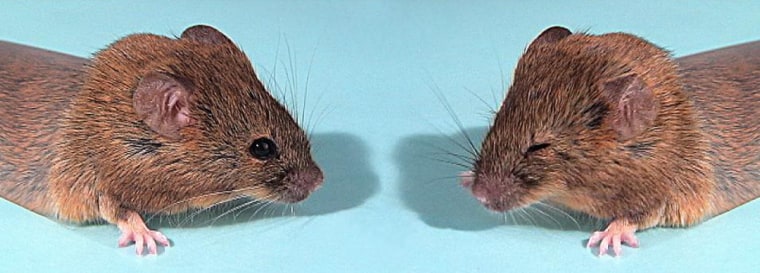It's not "Jurassic Park," but scientists have reconstructed a 530-million-year-old gene by piecing together key portions of two modern genes descended from it.
"We've shown some of the elements involved in the process of evolution by reversing this process and reconstructing a gene that later became two genes," said study team member Mario Capecchi of the University of Utah School of Medicine.
The achievement, detailed in Monday's issue of the journal Developmental Cell, could lead to new types of gene therapy, in which a damaged gene could be restored by pairing parts of it with portions from a similar gene from another part of the body, the researcher say.
Genes are snippets of DNA that carry instructions for building a protein. The splitting of one gene into many genes has occurred many times throughout life's history. With two identical genes, one can continue doing its normal job while the other is free to mutate. Most mutations are harmful and disappear, but every once in a while one proves beneficial to the organism and is passed on to future generations.
Rebuilding Hox genes
The researchers reconstructed an ancient control gene, called "Hox," which directs the actions of other genes during development of an animal embryo.
Early animals had 13 Hox genes until about 500 million years ago. Those 13 Hox genes multiplied four times, but some were lost because they were redundant. Today, humans and other mammals have 39 Hox genes.
The modern descendants of one of those archaic genes, Hox1, are Hoxa1 and Hoxb1.
Hoxa1 is important for breathing functions. When Hoxa1 is disabled in embryonic mice, they die shortly after birth. Hoxb1 orders the formation of nerve cells that ultimately control facial expressions in animals. When a mouse is born with a disabled Hoxb1 gene, it suffers facial paralysis and can't blink its eyes, wiggle its whiskers or pull back its ears.
The researchers combined critical portions of Hoxa1 and Hoxb1 to re-create the original Hox1. The reconstructed gene performed the jobs of both genes. Mice born with Hox1 could breathe because they had the crucial part of Hoxa1, and they could move their facial muscles because they had a small bit of Hoxb1.
"What we have done is essentially go back in time to when Hox1 did what Hoxa1 and Hoxb1 do today," Capecchi said.
Gene substitutions
The new hybrid gene is not an exact copy of the 530-million-year-old gene, the researcher say, but it does perform essentially all the functions of the ancient gene. The reconstructed gene lacks Hoxc1 and Hoxd1, two descendant genes that vanished during evolution because they were either redundant or played minor roles.
The study could lead to new approaches to gene therapy, the researchers say.
"It shows that genes are not as different as we thought, and that we can perhaps tweak and recruit one to do the job of another that is mutated and not as easy to fix," study team member Petr Tvrdik told LiveScience.
If a gene duplicated into two and evolved separate functions in the body — for example, one gene works in the brain and the other in the liver — then if the brain version of the gene becomes mutated or deleted, parts of it could be combined with portions of the liver gene to reconstruct a gene similar to the normal brain gene.
